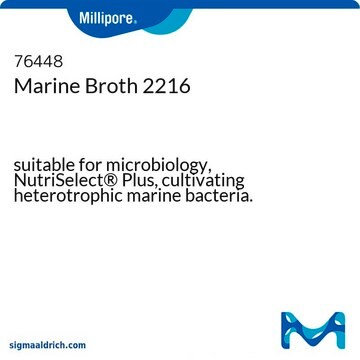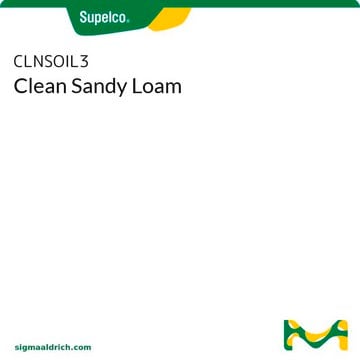Yes, this product can be used in F/2 medium for culturing marine microbes. See the attachments and link below.
https://www.sciencedirect.com/science/article/pii/S221192641830242X
https://www.doc-developpement-durable.org/file/Culture/culture-algues/algoculture/alga%20culturing%20techniques%20Harrison_Berges_2005.pdf
Recommended Products
sterility
non-sterile
Quality Level
form
powder
manufacturer/tradename
NutriSelect® Basic
technique(s)
microbiological culture: suitable
application(s)
agriculture
environmental
food and beverages
life science and biopharma
suitability
marine bacteria
General description
Application
- for the preparation of artificial seawater to culture microalgae[3][4]
- to assess nitrogen fixation rates[5]
- as a supplement in Hugh and Leifson′s oxidation fermentation (OF) basal medium[6][7]
Other Notes
Preparation Note
After dissolving, adjust pH to 8.2 using 0.1 N solution of sodium hydroxide or hydrochloric acid.
Footnote
The designations basic, plus, or prime are added to indicate the quality control level, from basic quality control to standard QC plus to prime for full regulatory compliance.
Legal Information
Storage Class Code
11 - Combustible Solids
WGK
WGK 3
Flash Point(F)
Not applicable
Flash Point(C)
Not applicable
Personal Protective Equipment
Choose from one of the most recent versions:
Already Own This Product?
Find documentation for the products that you have recently purchased in the Document Library.
Customers Also Viewed
-
Can the sea salts (S9883) be used to prepare f/2 medium?
1 answer-
Helpful?
-
-
I am using this to make synthetic seawater for membrane separations. I am not sure what amount of salt do I put into how much pure water to have an exact concentration of seawater. The specs mention <0.5ppm of trace metals, does this include Lithium?
1 answer-
The recommended usage concentration for marine culture is 40 g/L in H2O. The trace metals in this product will be found on the lot specific Certificate of Analysis. Please view the link below:
https://www.sigmaaldrich.com/certificates/COFA/S9/S9883/S9883-BULK________SLBX8504__.pdfLithiium is not an element that is regularly screened. Historically, the reported lithium concentration has been approximately 0.18 MG/L.
Helpful?
-
Active Filters
Our team of scientists has experience in all areas of research including Life Science, Material Science, Chemical Synthesis, Chromatography, Analytical and many others.
Contact Technical Service








